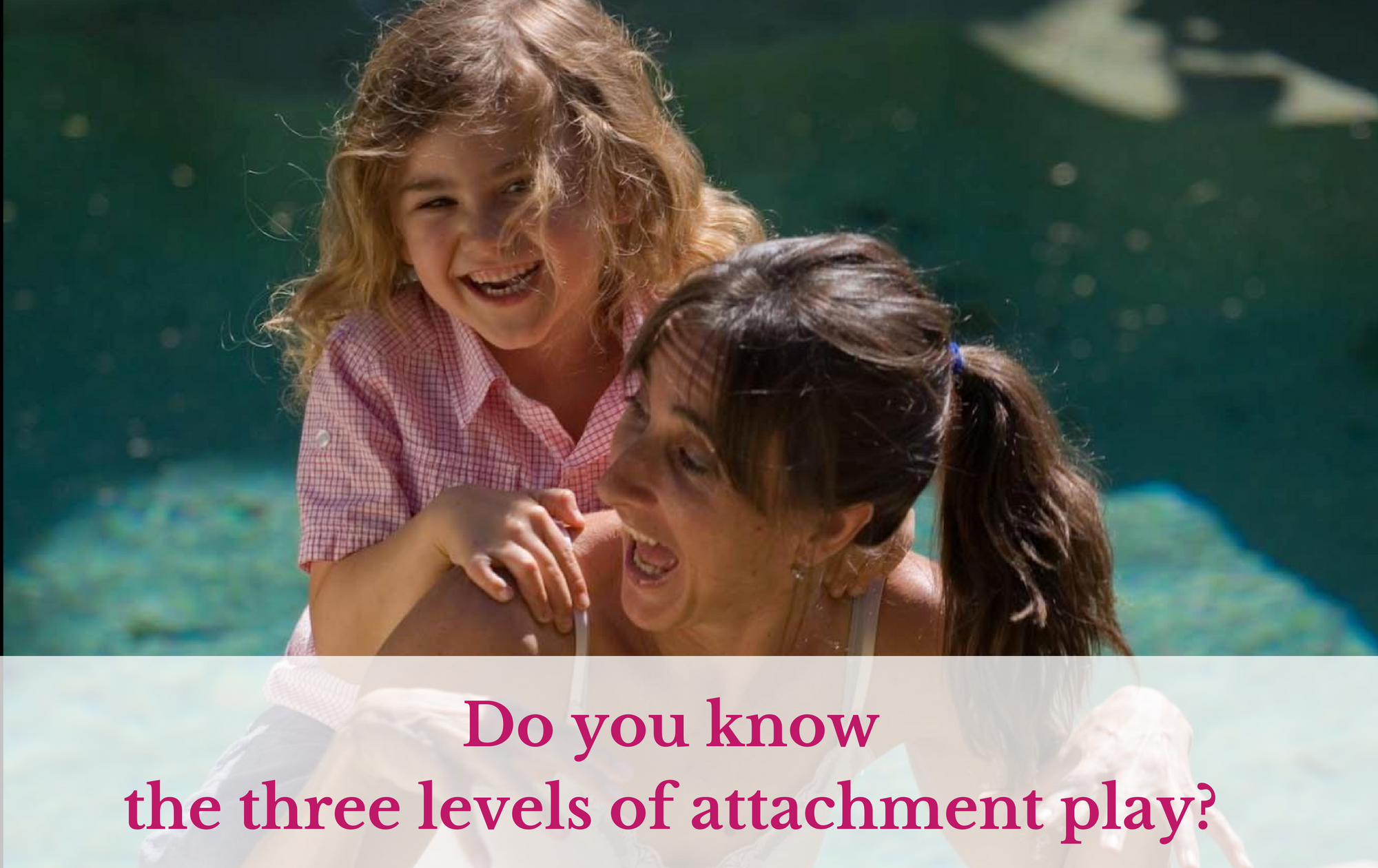Hello!
If attachment play is new to you, you might like to look at my free ebook on it HERE.
If you’re already familiar with it, I wonder if you’ve thought about it operating at three different levels.
This is how I think of it.
CONNECTION AND CHOICE LEVEL
For example, if our children are just a bit antsy; agitated; not cooperating; just a bit ‘off’, then often, some Present Time can make all the difference.
Often they are simply needing some focussed connection and choice, and some Present Time, perhaps even just once, or regularly over a few days, can shift that for them.
Present Time is a magical practice to help fill up a child’s cup of connection and choice.
And so any behaviours that are being caused by a need for connection and choice can dissolve away with some Present Time.
RELEASING LIGHTER FEARS AND FRUSTRATIONS LEVEL
But perhaps the feelings are a bit bigger. Perhaps they’re ‘teasing’ their sibling or using lots of swear words, in which case, adding in some power-reversal games or nonsense play would probably help them release the feelings causing those behaviours.
With nonsense play, you could pretend to mis-hear the swear words and use slightly different words that have a funny edge to them. Or you could play Lawrence Cohen’s “Don’t use my secret name” game, which I’ve found really helpful. In the game, if your child is calling you “bum bum head”, you might say, “oh, you can call me bum bum head, but WHATEVER YOU DO, DON’T CALL ME FLOWERPOT HEAD, because it’s my secret name!” And then, of course, they call you flowerpot head and you say in mock surprise, “NOOOO! Not my secret name! You’re not going to tell anyone, are you?” and so on!
In that way, they get to release the feelings underlying the swear words or the name calling, through doing what we ‘asked them not to’ and laughing when they use the ‘forbidden words’.
And a few rounds, perhaps over a few days, again might be enough to shift that behaviour.
CREATING THE SPACE FOR DEEPER FEELINGS TO BE EXPRESSED
But what about behaviours that are perhaps stemming from bigger feelings? Perhaps your child is hitting or throwing things or not telling the truth.
Present Time is going to help them feel more connected and having more choice, which are both really important and might be part of the cause of those behaviours.
But it might be that you need to do repeated power-reversal games to help them release the feelings of powerlessness or fear or frustration that underly the hitting or the throwing things.
And you might also find then the third level at which attachment play works.
In creating a sense of connection, and in helping your child release lighter feelings of fear or powerlessness or frustration, attachment play might then pave the way for your child to express the bigger feelings that underly the behaviours.
They might suddenly have a big tantrum after you’ve been playing, or they might start crying over some apparently small thing.
Attachment play is so powerful because it creates a deep sense of connection and emotional meeting which are the conditions required for children to let out deeper feelings of sadness and disappointment and jealousy and rage and fear and terror that need to come out through crying, raging and tantrums.
So, those are the three levels at which I see attachment play operating.
Present Time helps create a sense of connection and choice, which are core needs for children. So we can also put in Present Time when they’re showing behaviours that indicate they have feelings from unmet needs for connection and choice.
Attachment play, especially power-reversal games, nonsense play and rough and tumble games can help children feel deeply connected AND release feelings of powerlessness, embarrassment, light fears and uncertainties, and we can also use these games when our children are behaving in ways that indicate those feelings (eg. agitation, light phobias, not cooperating, etc.)
And attachment play can also help when there are bigger feelings underneath the surface, causing things like hitting, throwing, etc., because it creates a sense of connection, releases the lighter feelings through laughter, and makes way for, and a space for, the deeper feelings to be expressed through crying, raging and tantrums.
Play is in some ways so simple, and yet attachment play is a profound system to help children (and us) with so many of the things that are challenging.
And they are constantly inviting us to help them release and heal and connect through attachment play!
My 4 week attachment play course starts on Tuesday. If you’re interested in learning all about the 9 types of attachment play, knowing exactly when to use which one, and seeing videos of them in operation, you might enjoy to find out more. You can do that HERE.
Much love,
Marion xoxox
